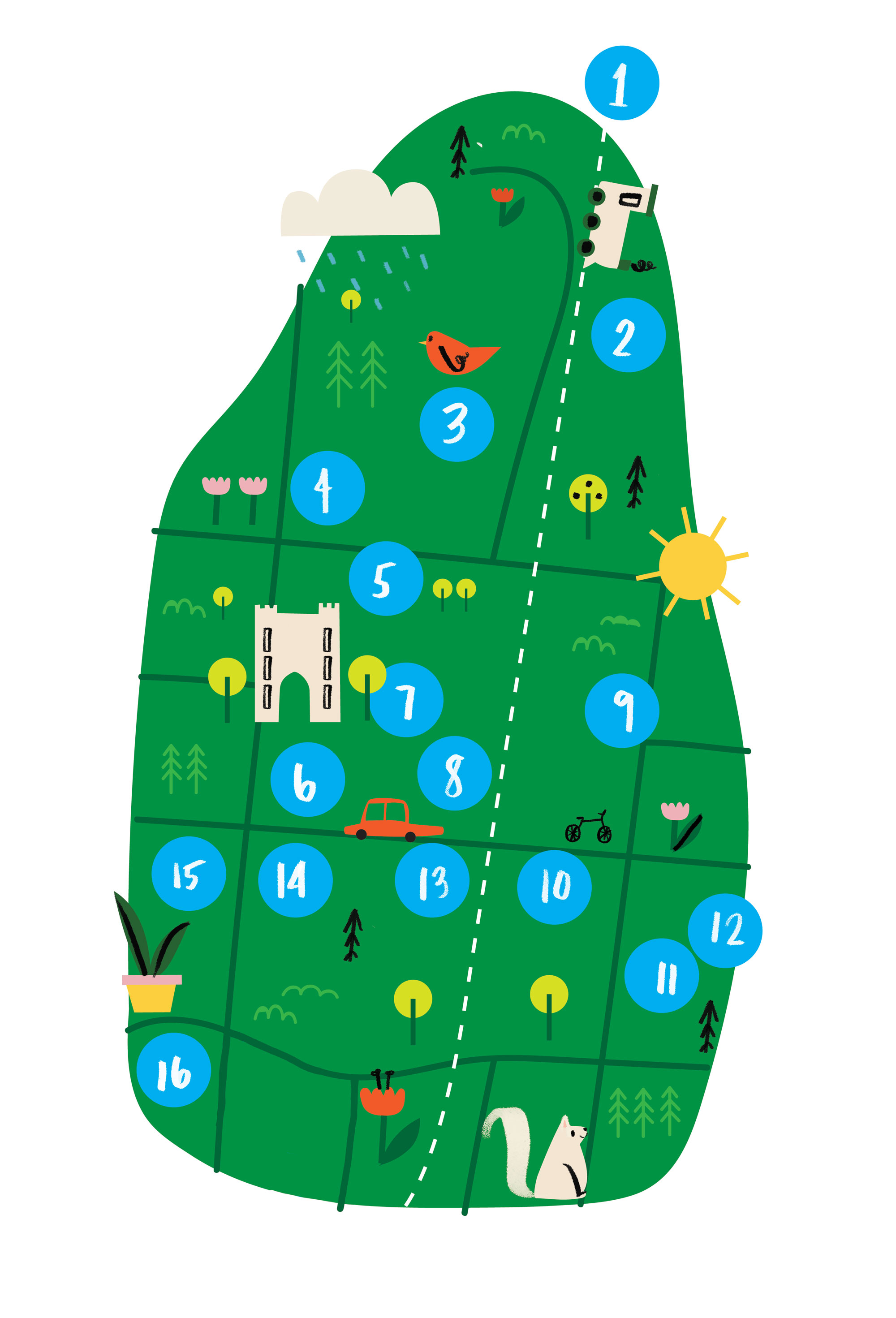
Sustainability Efforts Employed by the College
With a new utility-scale solar installation expected to be complete by the end of May (see no. 1 below), readers may wonder what other sustainability efforts the College employs. Many are in plain sight while others are literally buried, including four geothermal well fields. This map shows where most efforts take place.
- Utility-Scale Solar Installation
The College will purchase renewable electricity from Iowa-based Trusted Energy, which is building a 4-megawatt solar installation on 18 acres of farmland adjacent to campus. It’s expected to supply 30% of campus electricity and reduce the College’s carbon footprint by 18%. - Athletic Field Prairies
Native prairie plantings are used for wildlife and runoff filtration. - Football Field Irrigation
Rainwater and HVAC condensation is collected from the Field House and used to irrigate the football field. - Geothermal Well Field
One of four well fields, this one services the Bear Center natatorium and supplies heating and cooling. - Boiler Plant
Efficient practices include monitoring exhaust to ensure most efficient combustion and a reverse osmosis machine that removes minerals from city water before entering the steam system. - Residence Hall Renovations (one per summer)
Renovations typically include all LED lighting, updating control system to set temperature restrictions, water fountains with water bottle fillers, and new windows. - Geothermal Well Field
The well field beneath Mac Field provides heating and cooling to the Humanities and Social Studies Center and the Admission and Student Financial Services building. - Joe Rosenfield ’25 Center
Energy practices include CFL and LED lighting, daylight controls, white reflective roof, and a heat recovery system that recovers exhausted heat from HVAC, refrigerators, and coolers and also heats incoming fresh air during the winter. Food waste from the dining hall is collected, processed, and delivered to a local farm. - East Campus Residence Halls
Built from Iowa limestone, these residence halls were the first to be added to a centralized building automation system, which allows for setting permissible temperature ranges. Window sensors turn off heating and cooling to rooms when windows are open. - Electric Car Charging Station
- Solar Photovoltaic and Car Charging Station
This 17-kilowatt solar array provides power to the electric car charging station and supplies 100% of the electricity for the student house at 1128 East St. - Campus Garden
The garden provides locally sourced food as a demonstration of self-reliance. - Noyce Science Center
Energy-saving technologies include heat reclamation, a white reflective roof, and variable frequency sash hoods with occupancy sensors. A rainwater collection system provides irrigation water for the greenhouse. - Humanities and Social Studies Center
A geothermal system heats and cools the center. All lighting is LED. Extensive occupancy sensors are tied to lighting, heating, and cooling. Rainwater is collected for flushing toilets and irrigation. Excess stormwater is addressed via a bioswale system. A green roof will be installed on a portion of the building. - Admission and Student Financial Services
A geothermal system heats and cools the building. Most lighting is LED. Bioswales, permeable parking, and a small green roof address stormwater. Visitors can use an electric vehicle charging station. - Zipcar
This self-service car-sharing is available to students, faculty, staff, and the local community.
The College has several other buildings that are not pictured on the map, such as the Grinnell College Preschool and the Conard Environmental Research Area, which have geothermal well fields and other green attributes.
Many of these enhancements were made possible by the campus Green Fund, which was established in 2015. In discussions related to the Class of 1966’s 50th reunion in 2016, David Imes ’66 suggested a gift go partly toward solar panels. Inspired by that idea, David Miller ’66 encouraged his class to make the Green Fund a priority. An anonymous donor helped fully endow the fund. In part, the money allows Facilities Management staff to respond to students’ sustainability and green suggestions.
